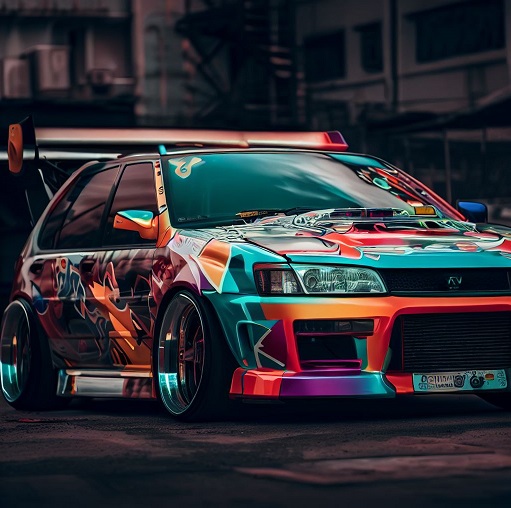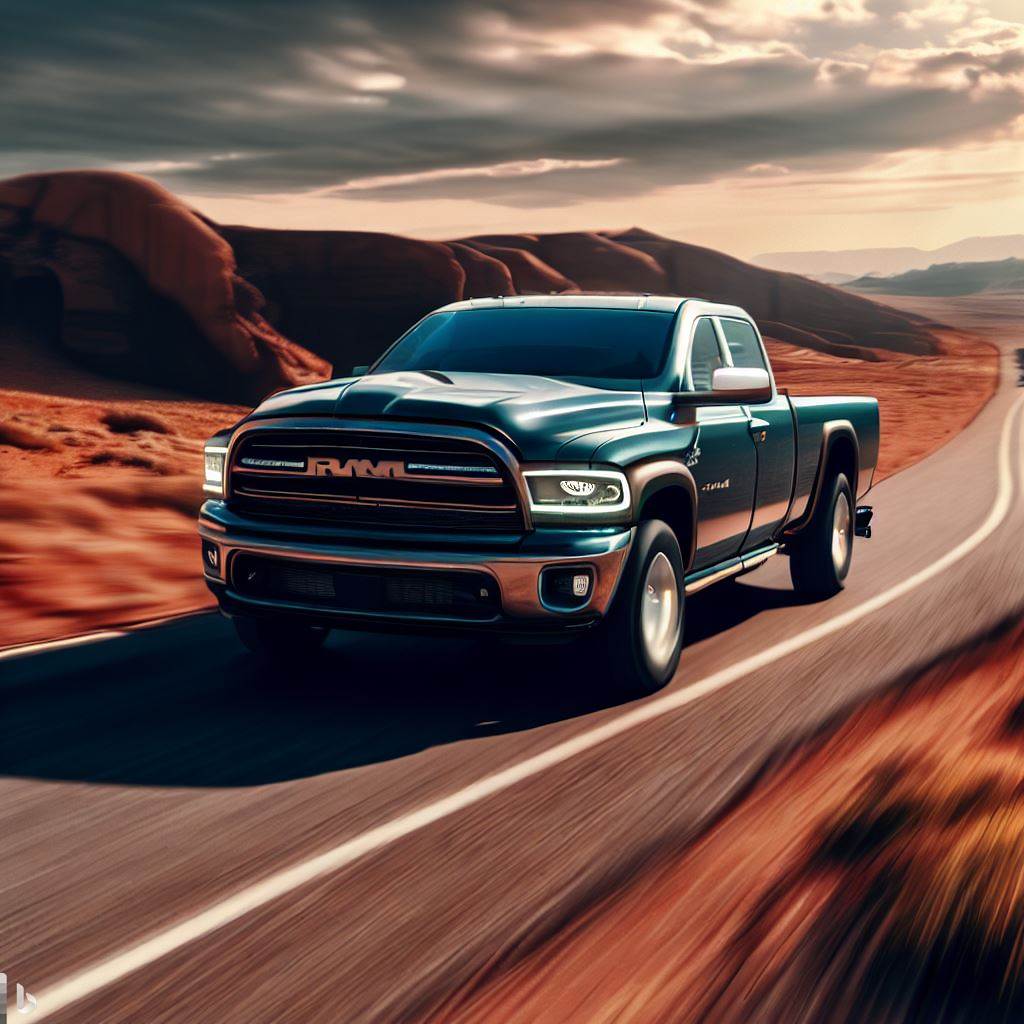Rev your engines and prepare to take a turbocharged journey into the wild and wonderful world of “ricer” cars. From the roaring exhausts to the eye-catching decals, these automotive wonders have been the source of fascination and controversy for car enthusiasts and casual observers alike. In this two-part exploration, we’ll delve deep into what it means to “rice” a car and uncover the distinctive characteristics that set ricer cars apart. So, buckle up and get ready to peel out into a subculture where aesthetics often take the front seat.

What Does “Riced” Mean in Cars?
The Quest for Ricer Clarity
To truly appreciate the mystique surrounding ricer cars, we first need to understand what it means to “rice” a car. At its core, “ricing” refers to the practice of customizing a car, often to an extreme degree, with a primary focus on appearance rather than performance. The term “rice” or “ricer” is derived from the word “rice burner,” originally used as a derogatory slang term for Asian-made motorcycles and later extended to Asian-made cars.
But here’s where it gets interesting: ricer culture is not confined to any specific ethnicity, car make, or geographic region. It’s a subculture that has transcended boundaries and become a global phenomenon, drawing in car enthusiasts from diverse backgrounds.
The Culture Clash: Stereotypes and Stigma
Ricer cars have managed to captivate attention and stir controversy for a myriad of reasons. One of the key drivers of this fascination is the clash of stereotypes. Ricer cars challenge established notions of what a car should be. They blur the line between high-performance racing machines and visually extravagant showpieces.
The term “ricer” is often used pejoratively, implying that the car’s modifications are superficial, excessive, or even tacky. It’s a label that simultaneously celebrates and mocks the unapologetic pursuit of aesthetics over all else.
Some critics argue that ricer cars prioritize form over function to such an extent that they compromise safety and performance. The roaring exhausts and flashy body kits can be seen as distractions from a car’s true purpose – getting from point A to B. However, ricer enthusiasts counter that they’re not trying to be the fastest on the track; they’re expressing their passion for automotive artistry.
What Makes A Car A Ricer Car?
Now that we’ve peeled back the layers of ricer culture, let’s dive headfirst into the tell-tale signs that distinguish a ricer car from the rest of the automotive pack. Buckle up – it’s about to get visually extravagant.
Ricer Car Characteristics
| Characteristic | Description |
|---|---|
| 1. Loud and Big Exhaust | Thunderous exhaust systems, oversized tips |
| 2. Abundance of Vents | Real and faux vents and scoops |
| 3. Extravagant Spoilers | Oversized, sometimes impractical spoilers |
| 4. Fake Badges and Stickers | Counterfeit badges, extensive sticker use |
| 5. Oversized Rims and Wheels | Large, flashy rims and wheels |
| 6. Ultra-Low Suspension | Extreme lowering and unconventional kits |
| 7. Dazzling Lights | Neon underglow, LED accents |
| 8. Race-Car Inspired Interiors | Bucket seats, roll cages, numerous gauges |
1. The Exhaust System Is Loud And Big
When you encounter a ricer car on the streets, one of the first things that will likely grab your attention is the exhaust system. It’s not just a means of expelling gases; it’s an auditory statement. These exhausts are big, bold, and loud enough to wake the neighbors on a Sunday morning.
The Roaring Symphony
To ricer aficionados, a thunderous exhaust note isn’t just music to their ears; it’s an announcement of their presence. It’s as if the car itself is shouting, “Look at me!” These exhaust systems often feature oversized tips that seem more at home on a rocket ship than a sedan.
The Decibel Dilemma
Critics argue that this emphasis on noise is nothing more than a cacophonous distraction. They contend that the excessive volume can be a nuisance to others on the road and that it contributes little to a car’s actual performance. But ricer enthusiasts argue that it’s all about personal expression. In their world, a car’s exhaust note is like a signature tune, and the louder, the better.
2. There Are Lots Of Vents And Scoops – Even Fake Ones

When it comes to ricer cars, the more vents and scoops, the merrier – even if some of them are purely for show. Vents and scoops, whether real or faux, are a way to convey an image of speed and performance.
Aerodynamics Or Aesthetics?
While high-performance sports cars often have functional vents and scoops to enhance aerodynamics and engine cooling, ricer cars take a different approach. Many of these vents and scoops are purely cosmetic, serving no practical purpose whatsoever. They’re there to create the illusion of speed and power.
The Visual Extravaganza
From oversized hood scoops to rows of faux side vents, ricer cars embrace the philosophy that more is more. It’s a visual extravagance that turns heads and ignites conversations wherever they go. Critics may scoff at the superficiality of it all, but ricer enthusiasts revel in the visual drama they create.
3. Spoilers Or Racing Wings For Extra…Drag
In the world of ricer cars, spoilers and racing wings aren’t just aerodynamic enhancements; they’re flamboyant expressions of style. But there’s a twist – these modifications often defy the principles of aerodynamics.
The Paradox of Performance
While spoilers and wings are designed to provide downforce and stability at high speeds, many ricer cars take a different approach. Some spoilers are so large and extravagant that they generate more drag than downforce, actually hindering a car’s performance.
Visual Drama in Flight
For ricer enthusiasts, spoilers and wings are about creating a visual spectacle rather than optimizing performance. These towering appendages can be adorned with decals, LED lights, or even chrome finishes, making them impossible to ignore on the road.
4. Fake Badges And Excessive Stickers
If there’s one thing ricer cars excel at, it’s blurring the line between genuine and counterfeit. Fake badges and excessive stickers are a hallmark of ricer culture, and they serve as a canvas for personal expression.
The Badge Game
Ricer cars often feature badges from prestigious automakers like Ferrari, Lamborghini, or Porsche. However, the key word here is “often” – these badges are frequently counterfeit. While some enthusiasts argue that these faux emblems pay homage to their dream cars, others view them as a form of deception.
The Sticker Frenzy
Stickers, often applied in abundance, cover ricer cars from bumper to bumper. They range from quirky quotes to tribal designs and everything in between. These stickers are a means of conveying the owner’s personality and interests, turning the car into a rolling canvas of self-expression.
5. The Rims And Wheels Are OTT
When it comes to wheels and rims on a ricer car, subtlety is not the name of the game. Ricer enthusiasts believe that the bigger and flashier, the better.
Rim Extravaganza
Oversized rims, often chrome-plated or featuring intricate designs, are a common sight on ricer cars. These wheels are meant to dazzle and are often paired with low-profile tires to complete the look. While they may not contribute to performance gains, they undeniably turn heads.
Stretching the Boundaries
To achieve the desired aesthetic, some ricer owners even opt for “stretching” their tires, which involves mounting tires with a narrower width on wider rims. This practice, though controversial from a safety standpoint, accentuates the visually extravagant appearance of the car.

6. Chicken Wire Body Kit For Lower Suspension
Lowering a car’s suspension is a time-honored modification in the automotive world, often done to improve handling and aesthetics. However, ricer cars take this practice to a whole new level.
The Lowrider Look
Ricer cars are notorious for their ultra-low suspension, often achieved with the help of extreme lowering kits. These kits can involve the use of unconventional materials like chicken wire to create a distinctive “slammed” appearance.
The Art of Camber
To complete the look, some ricer enthusiasts embrace negative camber, a suspension setup that angles the wheels inward. While this can improve handling in certain situations, it’s often taken to extreme degrees in ricer culture, resulting in a polarizing visual style.
7. Lights Fit For A Carnival
When the sun goes down, ricer cars come to life in a dazzling display of lights. From neon underglow to LED accents, these cars can rival a carnival in terms of visual spectacle.
Neon Dreams
Neon underglow kits are a favorite among ricer enthusiasts. These vibrant lights illuminate the underside of the car, casting an otherworldly glow on the pavement below. While they may not serve a practical purpose, they undeniably add to the car’s wow factor.
LED Everything
LED lights find their way onto almost every surface of a ricer car, from the headlights to the interior. Some owners even install multi-color LED setups that can be synchronized with music, creating a synchronized symphony of lights and beats.
8. A Remodeled Race-Car Interior
If the exterior of a ricer car is a work of art, the interior is often a masterpiece of customization. These interiors are transformed into race-car-inspired sanctuaries.
Bucket Seats and Roll Cages
Ricer car interiors frequently feature bucket seats, harnesses, and even roll cages, mimicking the look and feel of a race car cockpit. While these additions may not be necessary for daily driving, they enhance the overall aesthetic.
Gauges Galore
An array of aftermarket gauges adorns the dashboard and interior panels, often providing data that goes beyond the needs of the average driver. From air-fuel ratios to oil temperature, ricer cars leave no metric unmonitored.
Pros and Cons of Ricing Cars
| Pros | Cons |
|---|---|
| Avenue for Creative Expression | Compromised Performance |
| Unique Aesthetic Appeal | Safety Concerns |
| Community and Camaraderie | Negative Stereotypes |
| Customization Flexibility | Criticism for Excess |
| Pushing Automotive Boundaries | Expense of Modifications |
| Contribution to Car Culture Diversity | Legal and Regulatory Issues |
In conclusion, ricer cars are a testament to the diversity and creativity in the automotive world. While they may not conform to conventional standards of performance and aesthetics, they carve out a unique niche where personal expression reigns supreme. In Part 1, we uncovered the essence of ricing a car and explored the first two tell-tale signs. In Part 2, we ventured deeper into the ricer subculture, dissecting the remaining six distinctive characteristics that define these unique automotive creations.
Whether you admire ricer cars for their audacity or criticize them for their excess, one thing is undeniable: they have left an indelible mark on the automotive landscape, challenging perceptions and sparking conversations wherever they roam.


